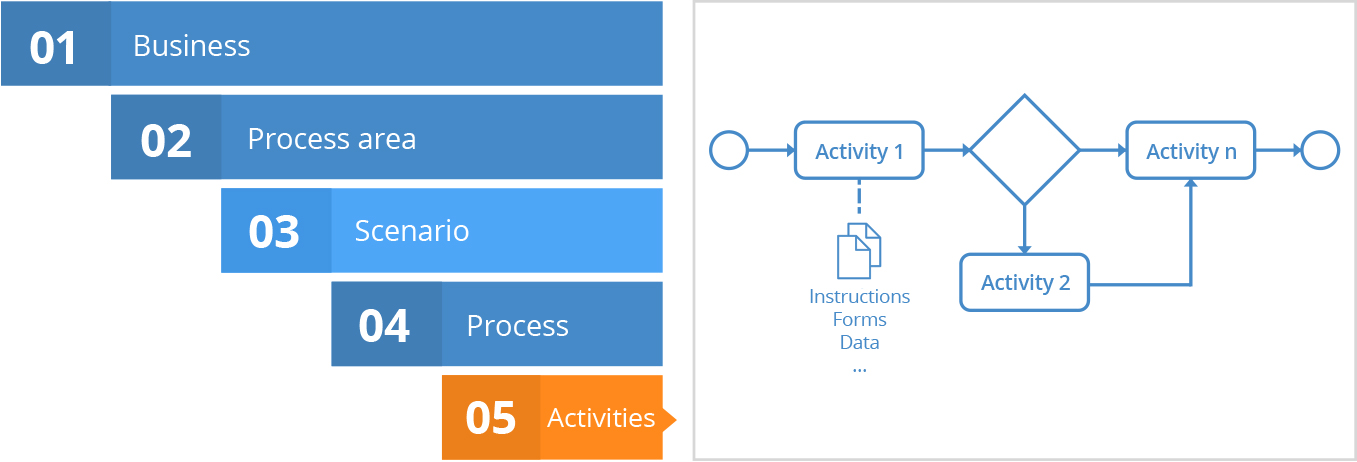Organizations are increasingly launching process management initiatives. Initially, a handful of processes that demand the utmost attention are subjected to analysis. However, over time the number of processes analyzed grows and there is a need to map and classify all the processes in the organization. It is then that the question arises: how can business processes be logically grouped and partitioned, ensuring each process finds its appropriate place and none is overlooked?
The number of processes in our practice can easily be as high as 300-1,200 for an entire organization. Besides requiring a logical and coherent structure, this number of processes also requires grouping. Another important aspect is the need to know whether anything has been missed and, if it has, whether there will be a place for it on the list later. Working with our clients from different business sectors, we have developed a practice-tested methodology for building process architectures, which we call the 5L Business Process Architecture.
5L BUSINESS PROCESS ARCHITECTURE METHODOLOGY
- The methodology is based on Michael Porter's value chain approach, which divides processes into value-creating and value-supporting.
- When analyzing value-creating processes, we first determine how many different businesses (value chains) a company has. Examples of different businesses that can be present in a single company may include the following: manufacturing, retailing, transport services.
- We divide each business into the main process areas of that business. The classic areas might be inbound logistics, production and operations, outbound logistics, sales, servicing. However, they can also be quite distinctive depending on the characteristics of the business.
- Each area is broken down into scenarios that must contribute to an outcome that is meaningful to the business. For example, a production plan has been drawn up, production is ready for shipment, raw material purchases have been made. It is important to note that good process management practices are applied here, and the name of the scenario is formulated in a result-oriented way.
- Each scenario has its own processes. Each process can have a BPMN process diagram (map) showing the activities of the process and their relationships.
- We add supporting processes to the value-creating processes by grouping them into the main areas of supporting processes (e.g., accounting, personnel management, quality management, etc.) and dividing them into scenarios and processes.
- These principles extend the classical value chain to a hierarchical architecture of 5 levels (hence the name 5L): dividing the value chain into areas, scenarios, processes and activities.

BENEFITS OF THE 5L BUSINESS PROCESS ARCHITECTURE METHODOLOGY
Process architecture is the foundation for implementing process management in organizations. First of all, a process architecture defines the boundaries of individual processes, identifies the number of processes, and allows the modelling, management, measurement and improvement of individual processes to begin. 5L Business Process Architecture features:
- Enables a structured description of the organization's overall activities in a business-friendly language
- Can be used at different levels of detail depending on the situation (process area level, scenario level, process level, activity level)
- Integrates best management practices (value chain, results orientation) into business management
- Easily integrates with the organizational structure and allows the allocation and visibility of responsibilities between different employees, departments, divisions
This is a brief introduction to the 5L Business Process Architecture methodology that we have developed. Please visit our process management website to learn more.
